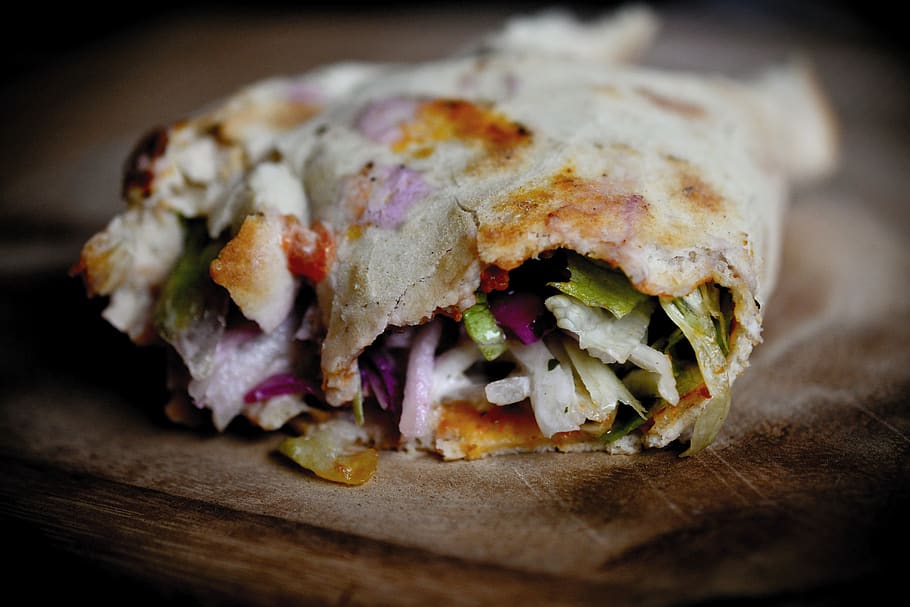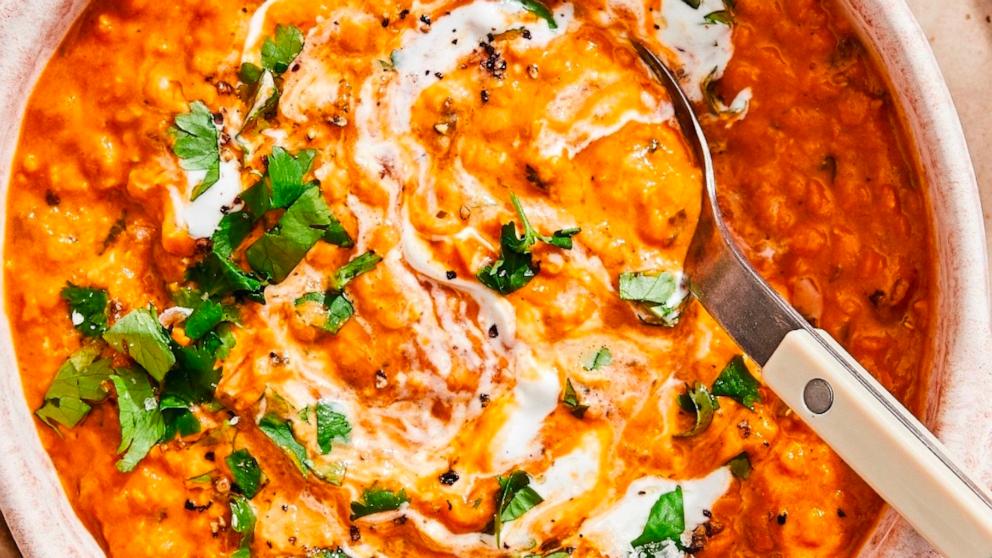Popular Middle Eastern street vendors often sell falafel and shawarma. These foods are staples of on-the-go dining in the region.
Street food is the heartbeat of Middle Eastern cities, offering a taste of local flavors and culture. Iconic street vendors line the bustling streets, drawing in both locals and tourists with the aromatic scents of spices and freshly cooked delights.
The quick-service style of these stands makes them a convenient eating option. A visit to these vendors provides an authentic dining experience, with specialties like kebabs, kofta, and hummus served hot from the grill. Each dish is often accompanied by a piece of warm, freshly baked pita bread — a perfect complement. Sampling street food from these vendors not only satisfies your hunger but also immerses you in the culinary traditions of the Middle East.
Street Food Culture In The Middle East
The Middle East is a treasure trove of flavors, where street food plays a pivotal role in the region’s culture. The aromas wafting through the bustling souks and the sizzle of grills on every corner illustrate the importance of this vibrant dining tradition. From savory kebabs to sweet baklava, the streets tell stories of culinary heritage and community.
Historical Significance
Street food in the Middle East has roots that are deep and historical. Centuries-old recipes have been passed down through generations. Vendors have been serving traditional bites long before restaurants became widespread. This culinary tradition has been a lifeline for traders and travelers across the historic Silk Road. Dishes like hummus, falafel, and shawarma havestood the test of time, reflecting the region’s rich history.
Contemporary Scene
Today, the street food scene in the Middle East is both dynamic and diverse. It continues to thrill locals and tourists alike. Cities like Beirut, Istanbul, and Cairo are bustling with food carts and open-air markets. These vendors showcase the modern fusion of flavors while still honoring traditional methods. Innovations and new tastes keep the culinary landscape exciting and ever-evolving.
- Food trucks offer gourmet twists to classic dishes.
- Night markets become hubs of social activity and exploration.
- Competitions and food festivals celebrate street cuisine

Credit: www.bloomberg.com
Hallmarks Of the Most Popular Middle Eastern Street Vendors
Welcome to the bustling streets of the Middle East, where the aroma of spices and the sizzle of grills enchant passersby. The hallmarks of Middle Eastern vendor fare are not only a treat for the taste buds but a testament to the region’s rich culinary heritage. With each bite, you savor the history, culture, and heart of Middle Eastern street cuisine.
Common Ingredients And Flavors
Street vendors in the Middle East serve dishes bursting with flavor. This is no accident. Each dish contains a blend of common ingredients and flavors that define the region’s taste profile. Let’s delve into these culinary building blocks:
- Spices: Key spices permeate Middle Eastern vendor cuisine. These include cumin, coriander, cardamom, and sumac.
- Herbs: Fresh herbs like mint, parsley, and dill frequently garnish dishes, adding a burst of freshness.
- Proteins: Grilled meats, such as lamb and chicken, provide a succulent experience. Falafel offers a vegetarian option.
- Grains: Rice and bulgur serve as foundations, while fluffy pitas wrap savory fillings.
- Vegetables: Grilled and fresh vegetables, such as tomatoes and eggplants, bring texture and nutrition.
Vendor dishes strike a balance between tangy, savory, and sometimes sweet flavors, creating a unique taste adventure.
Influence Of Local Traditions
Local traditions shape the offerings of Middle Eastern street vendors. These traditions intertwine with vendor fare in fascinating ways:
- Each region has its signature seasoning blend, such as za’atar or baharat, reflecting local taste preferences.
- Religious practices often dictate the choice of ingredients, ensuring they adhere to halal standards.
- Street food helps celebrate festivals and holidays, with special items offered to mark these occasions.
- The methods of cooking, like grilling over an open flame, have been passed down through generations.
This deep-rooted respect for tradition ensures that each dish is a homage to the past, steeped in cultural significance.
Iconic Street Eats And Where To Find Them
Iconic Street Eats and Where to Find Them teem with vibrant flavors that capture the essence of the Middle East. Every narrow alley and bustling market corner offers a sensory journey through delectable aromas and tastes. Falafel and shawarma stand as titans among these culinary delights. They beckon food lovers worldwide to indulge in their savory goodness. Here are the gems that should top every foodie’s must-try list.
Falafel: The Global Vegetarian Delight
Crispy on the outside, fluffy inside, falafel balls are a global hit. These vegetarian delights made from ground chickpeas or fava beans are seasoned with herbs and spices. Deep-fried to golden perfection, they’re usually served in a pita or with a salad. Street corners from Cairo to Beirut are famed for their falafel, so check out:
- El Mahdy Falafel in Cairo, Egypt
- Falafel HaNasi in Jerusalem, Israel
- Sahyoun in Beirut, Lebanon
Shawarma: Savoring The Rotisserie
The sight of juicy meat rotating on a spit is synonymous with shawarma. Seasoned beef, lamb, or chicken is slow-cooked to perfection before being shaved into thin slices. Wrapped in a soft flatbread with vegetables and tahini, this dish is a hearty meal. To sample some of the best shawarma, visit:
- Al Mallah in Dubai, UAE
- Shawarma Reem in Amman, Jordan
- Hawker Stall on Istanbul’s streets, Turkey

Day In The Life Of A Street Food Vendor
Imagine walking through a vibrant street in the Middle East. Aromas fill the air, leading you to the heart of the hustle: street food vendors. Each vendor starts their day before sunrise, embarking on a journey to feed the masses. Let’s delve into the day in the life of a street food vendor, from preparation to the faces that greet you with every savory bite.
Preparation Rituals
The sun peeks over the horizon as our vendor’s day begins. A symphony of pots and pans clangs in the background.
- Market Visits: Fresh produce handpicked for quality.
- Spice Selection: A careful blend of herbs and spices.
- Recipe Perfection: Each dish, a legacy of tradition.
Every ingredient matters. A vendor chops, mixes, and grills with precision.
Stoves are lit, grills are fired up, and an age-old process unfolds.
Faces Behind The Food
Meet Ali, who has served falafel for over twenty years. His warm smile welcomes you.
Nora gracefully shapes dough, her hands telling stories of generations.
| Name | Specialty | Years of Experience |
|---|---|---|
| Ali | Falafel | 20 |
| Nora | Kubaneh Bread | 15 |
Each vendor has a tale, a reason for their culinary journey.
They are the silent heroes feeding locals and tourists alike.
Culinary Innovations And Adapting Trends
The streets of the Middle East buzz with the spirit of innovation, especially in its bustling food markets. Street vendors are not just preserving traditional flavors. They’re reimagining them. Fresh culinary trends and healthier adaptations are making waves. These changes capture the hearts of locals and travelers alike. Street food is not just about quick snacks anymore. It’s about experience, innovation, and a new story in every bite.
Fusion Foods
Fusion foods combine flavors from different cultures. Street vendors create amazing new dishes. They mix Middle Eastern tastes with global cuisine. This leads to exciting creations like Shawarma Sushi and Falafel Tacos. These dishes give a nod to tradition while embracing the new.
- Shawarma Sushi: A Japanese twist on a Middle Eastern classic.
- Falafel Tacos: Combining Mexican and Middle Eastern street food.
- Baklava Cheesecake: A sweet fusion delight.
Health-conscious Adaptations
Health is a growing priority for consumers. Middle Eastern vendors respond. They offer gluten-free, vegan, and low-calorie options. Traditional recipes get a healthy makeover. Vendors use fresh, local ingredients. They show that street food can be both delicious and nutritious.
| Dish | Health Adaptation |
|---|---|
| Hummus | Organic chickpeas, less oil |
| Manakeesh | Whole grain dough, low-fat cheese |
| Grilled Kebabs | Lean meats, grilled veggies |

Credit: www.goodmorningamerica.com
Navigating The Street Food Scene
Exploring the lively streets of the Middle East reveals a burst of flavors and aromas. Vibrant markets are home to some of the most enticing street food stalls.
Street vendors offer a taste of authentic local cuisine. Don’t miss out on sizzling kebabs, crisp falafels, and sweet baklavas.
Must-visit Destinations For Gourmands
- Istanbul’s Grand Bazaar: A feast for the senses with delicious Turkish delights.
- Marrakesh’s Jemaa el-Fna: Dive into a variety of Moroccan street foods.
- Beirut’s Hamra Street: Enjoy Lebanese favorites, from Shawarma to Manakeesh.
- Cairo’s Khan El Khalili: Savor Egyptian dishes at this bustling bazaar.
Street Food Etiquette
- Always ask for prices before ordering to avoid surprises.
- Eat with your right hand as it’s the local custom in many Middle Eastern countries.
- Be patient when waiting in line; it’s part of the experience.
- Show appreciation with a smile and thank you in the local language.
Frequently Asked Questions Of Popular Middle Eastern Street Vendors
What Is The Most Popular Meat In The Middle East?
The most popular meat consumed in the Middle East is lamb, known for its rich flavor and cultural significance in regional cuisine.
What Is The Most Popular Middle Eastern Street Vendors?
Hummus is arguably the most popular Middle Eastern food, widely loved for its versatile and creamy chickpea-based dip.
What Is The Most Famous Arabic Dish?
The most famous Arabic dish is hummus, a spread made from chickpeas, tahini, lemon, and garlic. It’s a staple in Middle Eastern cuisine, enjoyed with bread or as a dip.
What Are The Street Food Vendors?
Street food vendors sell ready-to-eat food and beverages on public thoroughfares. These independent sellers operate from stalls or carts, specializing in quick, affordable, and often culturally specific snacks and meals.
Conclusion
Exploring Popular Middle Eastern Street Vendors offers a unique culinary adventure. Every bite tells a story of tradition and innovation. Remember these names – falafel, shawarma, kofta, they are the heartbeats of bustling streets. Discovering these flavors is not just an indulgence, it’s a journey through culture and history.
As you close this tab, let your next open one be your ticket to these authentic eats.

